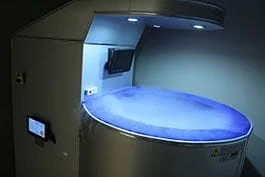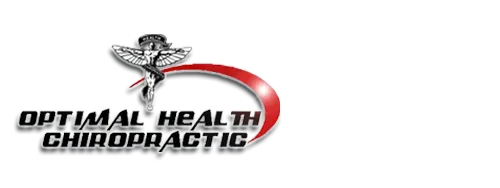High-tech healing: It’s no longer just for the pros!
What is Whole Body Cryotherapy?
Cryotherapy began as early as the 17th century for therapeutic benefits, using extremely low temperatures. In 1978, Dr. Yamaguchi of Japan began using short duration freezing sessions on his patients’ skin surface through the rapid decrease of temperature of the outer layer of skin for immediate relief of rheumatoid arthritis.
In the 1980s Yamaguchi and his associates came to the conclusion that the human body has a more beneficial effect when using a cryosauna for rapid short-term freezing of the skin’s surface than its gradual cooling while immersed in an ice bath. Over the last 3 decades throughout Europe, studies have concluded that WBC as a powerful therapy for, and recovery from, a variety of conditions.
Check out this short video from Nike-The Oregon Project to see what whole body cryotherapy is all about!
Whole Body Cryotherapy vs. Ice Bath

WBC is not simply a faster version of an ice bath. The body’s reaction to low temperatures while submerged in an ice bath (7°C/45°F) is radically different from its reaction to cryo temperatures (lower than -110°C/-166°F) in the cryosauna.
In an ice bath, the body attempts to warm blood in its core and send it to the peripheral tissues to prevent the skin surface from freezing (vasodilation). While in an ice bath, the body is struggling with actual, unrelenting, penetrating physical cold (not just signals from skin cold sensors). Blood begins cooling as it nears the skin surface and its return to the core begins to decrease the body’s core temperature. Eventually muscles start to congeal and freeze as well. The small benefit of a temporary numbing effect for perceived reduction of pain and inflammation is far outweighed by the potentially damaging effects of the ice bath.
Conversely, in the cryosauna, the body constricts peripheral tissues sending blood from the skin surface, muscle tissue, and surrounding joint space to the core to protect core temperature (vasoconstriction). As the blood travels to the core it passes through the cardiovascular system where it is cleansed of toxins and supplied with oxygen, nutrients, and enzymes. As long as the exposure to the extremely cold temperature continues the body continues to flush the tissue of toxins and circulate blood between the cardiovascular system and the vital organs on a continuous loop. This continues to cleanse the blood over and over while continuing to add oxygen, nutrients, and enzymes. Once the participant exits the cryosauna, the body immediately begins vasodilation, returning the enriched blood to peripheral tissues that have been cleansed of toxins.
The key to this difference is the temperature of the environment, the skin surface temperature, and the speed of the reduction of the skin surface temperature. In an ice bath the temperature can only reach 7°C/45°F while the temperature in a cryosauna can reach -170°C/-270°F. This means that skin surface temperature in an ice bath can only reach 5°C/41°F after a wet, prolonged, and often painful session while skin surface temperature in the cryosauna reaches -1°C/30°F in just 30-40 seconds and the total length of time the skin is exposed to this invigorating, dry, temperature is never more than 3 minutes.
During an ice bath, tissue begins to freeze and muscles temporarily lose capacity. Muscle tissue then needs time to return to normal which requires the body to rest. Therefore, an ice bath must be scheduled at the end of a rigorous workout so the participant can recuperate overnight. In contrast, the cryosauna does not actually freeze muscle tissue. It only creates a powerful illusion that the body freezes. In fact, upon exit from the cryousauna, the blood flow back to the peripheral tissues warms the muscles almost immediately. Therefore, the participant may use the cryosauna both before and after a workout which is an effect that is impossible to realize with an ice bath.
Lastly, while in an ice bath, oxygen supply to the skin surface is interrupted, and it causes skin surface injury that can promote skin disease if the procedure is often repeated. Significant health risks may involve the MRSA infection (a bacterial infection that is highly resistant to some antibiotics) if ice baths are not cleaned and maintained properly. There is no such effect in the cryosuana as the client is surrounded by cold dry air and oxygen supply to the skin surface is not significantly interrupted.
*These statements have not been evaluated by the FDA. These products are not intended to diagnose, treat, cure, or prevent any disease.
Click on the links below for more information about whole body cryotherapy
